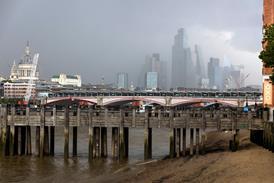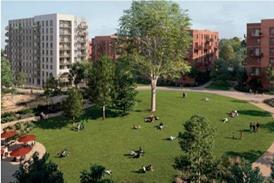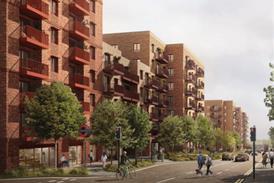- Home
- Intelligence for Architects
- Subscribe
- Jobs
- Events

2025 events calendar Explore now 
Keep up to date
Find out more
- Programmes
- CPD
- More from navigation items
Never stop experimenting

Gillian Darley finds parallels between Anni Albers, Nicholas Grimshaw and Hawkins Brown’s Here East
The recent exhibition of Anni Albers’ work at Tate Modern was a revelation to me as to many. Her work was a lifelong programme of continual, fruitful, investigation and fresh thinking. She began as she meant to go on; a student at the Bauhaus, she used a new synthetic material, cellophane, wove it with chenille, and produced a remarkable auditorium wall covering, in which the interlaced threads were designed to reflect light, while the fabric was also satisfactorily soundproof.
At every turn of her long career as a weaver, she gave the conventions of textiles a new thrust and seemed able to draw out different properties and applications from almost anything she chose. Her work might be aesthetically effective, it usually was, but that was only one of her objectives.
Later on, considering the possibilities of fabric screens, she developed a theory and practice in what she termed “the pliable plane”. She envisaged fabric panels in museum displays, and within modernist rooms, the fluidity of fabric “walls” adding an indeterminant aspect to otherwise defined spaces, with materials which might equally be transparent or reflective. The longer you look at Albers’ work, the more subtly inventive it reveals itself to be.
…
This content is available to registered users | Already registered?Login here
You are not currently logged in.
To continue reading this story, sign up for free guest access
Existing Subscriber? LOGIN
REGISTER for free access on selected stories and sign up for email alerts. You get:
- Up to the minute architecture news from around the UK
- Breaking, daily and weekly e-newsletters
Subscribe to Building Design and you will benefit from:

- Unlimited news
- Reviews of the latest buildings from all corners of the world
- Technical studies
- Full access to all our online archives
- PLUS you will receive a digital copy of WA100 worth over £45
Subscribe now for unlimited access.






